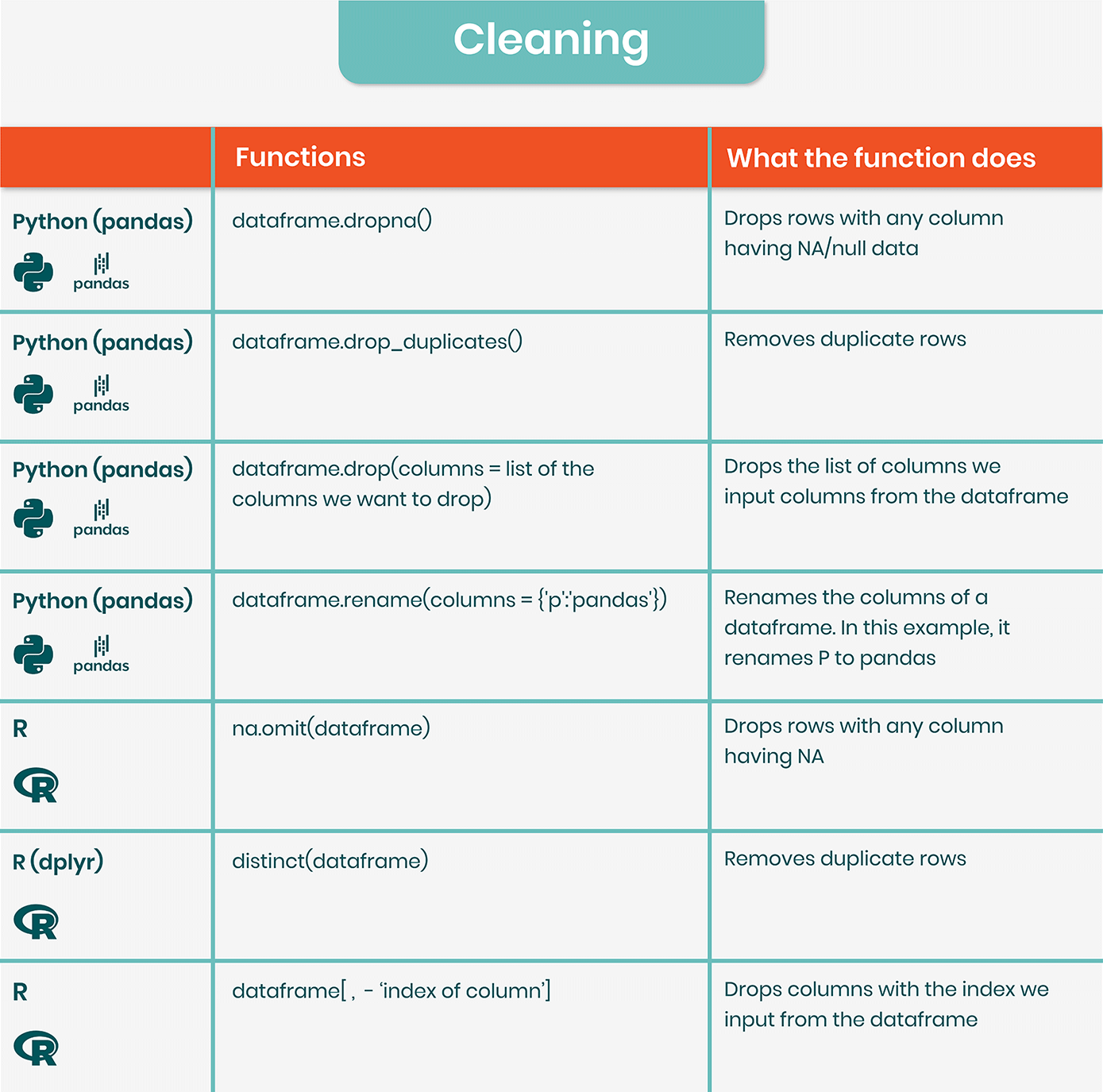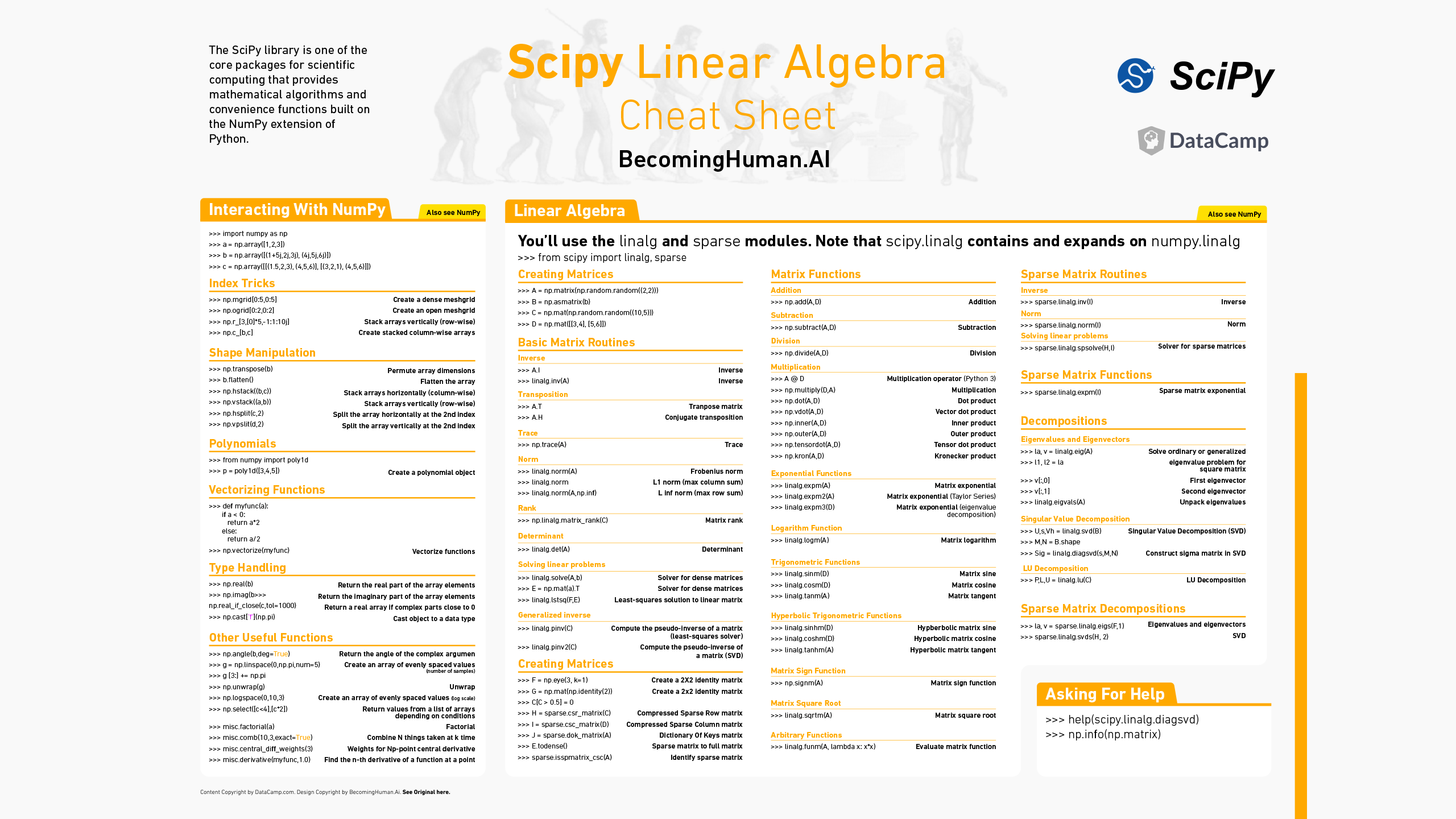Getting started
R Cheat Sheets Tidyr
tidyr functions fall into five main categories:
Tidy Evaluation with rlang Cheatsheet Tidy Evaluation (Tidy Eval) is a framework for doing non-standard evaluation in R that makes it easier to program with tidyverse functions. Non-standard evaluation, better thought of as “delayed evaluation,” lets you capture a user’s R code to run later in a new environment or against a new data frame. The goal of tidyr is to help you create tidy data. Tidy data is data where: Every column is variable. Every row is an observation. Every cell is a single value. Tidy data describes a standard way of storing data that is used wherever possible throughout the tidyverse. If you ensure that your data is tidy, you’ll spend less time fighting with the tools and more time working on your analysis. R Syntax Comparison:: CHEAT SHEET Even within one syntax, there are o'en variations that are equally valid. As a case study, let’s look at the ggplot2 syntax. Ggplot2 is the plotting package that lives within the tidyverse. If you read down this column, all the code here produces the same graphic. Quickplot ggplot. Variable: A quantity, quality, or property that you can measure.; Observation: A set of values that display the relationship between variables.To be an observation, values need to be measured under similar conditions, usually measured on the same observational unit at the same time.

“Pivotting” which converts between long and wide forms. tidyr 1.0.0 introduces
pivot_longer()andpivot_wider(), replacing the olderspread()andgather()functions. Seevignette('pivot')for more details.“Rectangling”, which turns deeply nested lists (as from JSON) into tidy tibbles. See
unnest_longer(),unnest_wider(),hoist(), andvignette('rectangle')for more details.Nesting converts grouped data to a form where each group becomes a single row containing a nested data frame, and unnesting does the opposite. See
nest(),unnest(), andvignette('nest')for more details.Splitting and combining character columns. Use
separate()andextract()to pull a single character column into multiple columns; useunite()to combine multiple columns into a single character column.Make implicit missing values explicit with
complete(); make explicit missing values implicit withdrop_na(); replace missing values with next/previous value withfill(), or a known value withreplace_na().

In a previous post, I described how I was captivated by the virtual landscape imagined by the RStudio education team while looking for resources on the RStudio website. In this post, I’ll take a look atCheatsheets another amazing resource hiding in plain sight.
Apparently, some time ago when I wasn’t paying much attention, cheat sheets evolved from the home made study notes of students with highly refined visual cognitive skills, but a relatively poor grasp of algebra or history or whatever to an essential software learning tool. I don’t know how this happened in general, but master cheat sheet artist Garrett Grolemund has passed along some of the lore of the cheat sheet at RStudio. Garrett writes:
One day I put two and two together and realized that our Winston Chang, who I had known for a couple of years, was the same “W Chang” that made the LaTex cheatsheet that I’d used throughout grad school. It inspired me to do something similarly useful, so I tried my hand at making a cheatsheet for Winston and Joe’s Shiny package. The Shiny cheatsheet ended up being the first of many. A funny thing about the first cheatsheet is that I was working next to Hadley at a co-working space when I made it. In the time it took me to put together the cheatsheet, he wrote the entire first version of the tidyr package from scratch.
It is now hard to imagine getting by without cheat sheets. It seems as if they are becoming expected adjunct to the documentation. But, as Garret explains in the README for the cheat sheets GitHub repository, they are not documentation!

RStudio cheat sheets are not meant to be text or documentation! They are scannable visual aids that use layout and visual mnemonics to help people zoom to the functions they need. … Cheat sheets fall squarely on the human-facing side of software design.
Cheat sheets live in the space where human factors engineering gets a boost from artistic design. If R packages were airplanes then pilots would want cheat sheets to help them master the controls.
The RStudio site contains sixteen RStudio produced cheat sheets and nearly forty contributed efforts, some of which are displayed in the graphic above. The Data Transformation cheat sheet is a classic example of a straightforward mnemonic tool.It is likely that even someone who just beginning to work with dplyr will immediately grok that it organizes functions that manipulate tidy data. The cognitive load then is to remember how functions are grouped by task. The cheat sheet offers a canonical set of classes: “manipulate cases”, “manipulate variables” etc. to facilitate the process. Users that work with dplyr on a regular basis will probably just need to glance at the cheat sheet after a relatively short time.
The Shiny cheat sheet is little more ambitious. It works on multiple levels and goes beyond categories to also suggest process and workflow.
The Apply functions cheat sheet takes on an even more difficult task. For most of us, internally visualizing multi-level data structures is difficult enough, imaging how data elements flow under transformations is a serious cognitive load. I for one, really appreciate the help.
Cheat sheets are immensely popular. And even in this ebook age where nearly everything you can look at is online, and conference attending digital natives travel light, the cheat sheets as artifacts retain considerable appeal. Not only are they useful tools and geek art (Take a look at cartography) for decorating a workplace, my guess is that they are perceived as runes of power enabling the cognoscenti to grasp essential knowledge and project it in the world.
R Tidyr Cheat Sheet
When in-person conferences resume again, I fully expect the heavy paper copies to disappear soon after we put them out at the RStudio booth.

